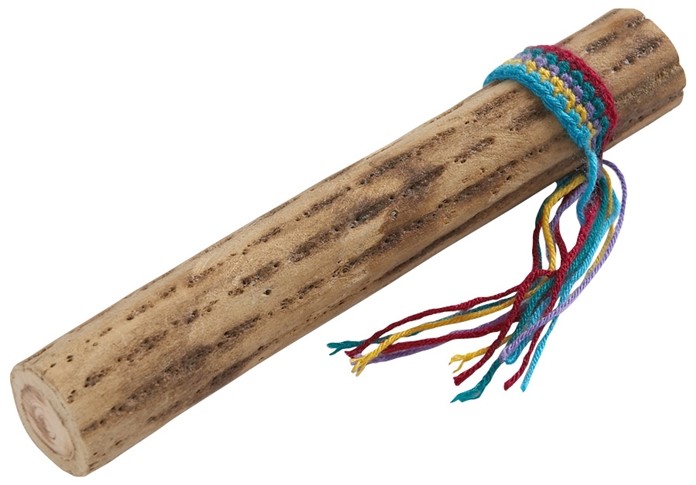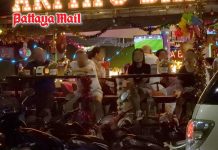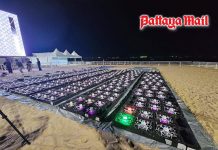
Yesterday I was pottering around among the books in the study and among the bookshelves I suddenly came across an old rain-stick, a curious thing which I bought at a Mexican festival on London’s South Bank countless years ago. Perhaps you’ve not yet encountered a rain-stick. It’s a cylindrical object, about thirty inches long and about three inches in diameter and made from the trunk of a particular species of prickly cactus. To make one, you cut out a section of the trunk, remove the spiky thorns and then bash them back into the wood so that they protrude on the inside of the tube. It’s slightly more complicated than this, because the thorns must be arranged in a particular way. The whole thing is left out in the sun to dry and later one end is sealed. Small pebbles or dried beans are poured inside and the other end of the tube is sealed. When the tube is upended, the contents trickle down catching on the thorns as they go.
The oddly satisfying sound is reminiscent of gently falling rain, especially if you hold your ear close to the tube. It’s thought that the rain-stick was invented by the Mapuche, the indigenous inhabitants of present day Chile and Argentina. Similar devices are also found in Asia and Africa where they’re more usually made of bamboo. The Mapuche optimistically believed that sounding the rain-stick could bring about a downfall though whether it actually worked is anyone’s guess.
Like other artifacts originally designed for everyday use, they’re sometimes used as musical instruments, though in the concert hall the sound is barely audible. One of the few orchestral works that features a rain-stick is a thrilling concerto by one of Finland’s most significant living composers.
Kalevi Aho is a hugely productive composer and draws on a wide range of musical genres to create his own soundscapes. He is known especially for his large scale works which include seventeen symphonies, thirty concertos, five operas and a great deal of chamber music. This concerto dates from 2010 and uses a wide range of percussion instruments and unusual playing techniques.
Watch out for the appearance of a vibraphone (at 14:30), a large xylophone-like instrument with aluminium bars and motor-driven rotating disks at the top end of its resonator tubes, producing a tremolo effect.
The concerto is performed by the Austrian percussionist who provides a virtuosic display which is nothing short of thrilling. It’s an incredible feat of musical memory too. Towards the end of the concerto the thunderous sounds begin to die away and the work ends in almost total silence with the sound of a rain-stick.
In many societies, the raw elemental power of drums, bells and cymbals has ceremonial, sacred, or symbolic associations. The first drum appeared after someone decided to place a dried animal hide over a frame and then pull it tight so that it vibrated when struck. Perhaps it was invented by accident. Percussion instruments were slow to enter the developing orchestra of the eighteenth century but the timpani (or kettle-drums) were the first, usually in the form of a pair of tuned drums to reinforce the sound at climatic moments. The twentieth century saw the rise of orchestral percussion as never before and composers frequently wrote for a massive battery of instruments requiring a high level of skill to play them.
Joseph Schwantner is a prolific American composer who draws on many different musical traditions such as impressionism, jazz, serialism, African drumming and minimalism. The Concerto for Percussion dates from 1994 and was commissioned by the New York Philharmonic. The soloist uses two groups of percussion, one placed behind the orchestra and used during the first and third movements and another group placed in front of the orchestra for the second. Not only that, but there’s also orchestral percussion and timpani along with piano and harp. The work relies very much on repetitive minimalist approaches with contrasting timbres and textures and uses a wide variety of percussion instruments and playing techniques.
Oh, and if you’d like a rain-stick for your own personal entertainment, you can buy them ready made at Amazon. They come in a variety of styles and sizes and they’re pleasant things to have around the home, especially the brightly decorated varieties. Alternatively, you can hire my own rain-stick for a few days. There would, of course be a modest fee.
 |
 |
 |





